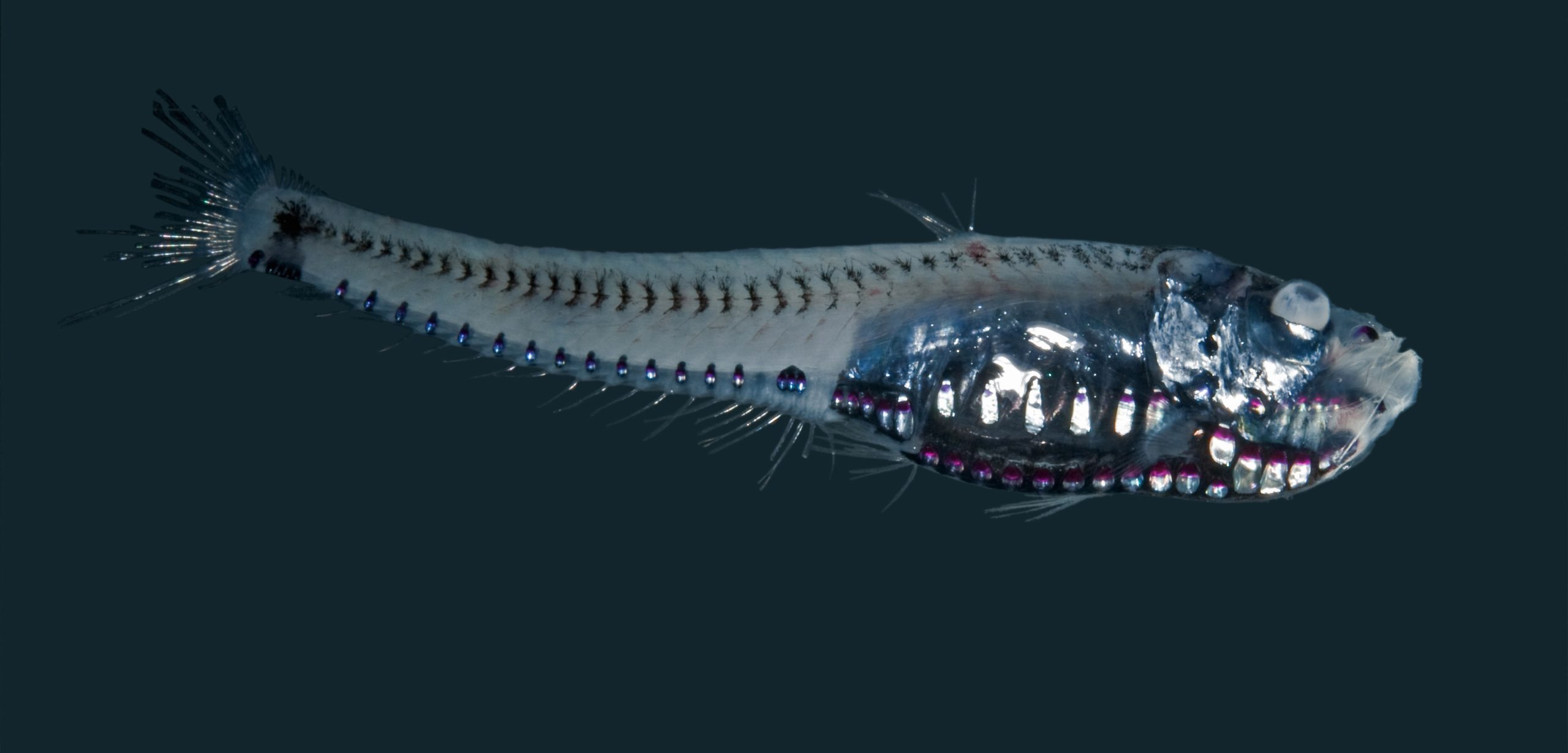Stories from the Seven Seas
A weekly roundup of coastal curiosities.
Article body copy
Hakai Magazine is all about the coast, but other outlets sometimes share our fascination. Every week on Strand we round up our favorite coastal stories from around the web.
An ocean mystery in the trillions
by William J. Broad for The New York Times
“[S]cientists have only recently come to realize that the bristlemouth—a fish of the middle depths that glows in the dark and can open its mouth extraordinarily wide, baring needlelike fangs—is the most numerous vertebrate on the earth.
‘They’re everywhere,’ Bruce H. Robison, a senior marine biologist at the Monterey Bay Aquarium Research Institute in California, said of the bony little fish. ‘Everybody agrees. It’s the most abundant on the planet.’”
What gives the beach that smell? Sulfur-making algae
by Sophia Chen for Wired
“The algae also are a basic food source for ocean organisms such as small fish, and the smell lets schools know their next meal is nearby. Even seabirds are attracted to the smell, which alert them to the small fish in the water. ‘When organisms learn that there’s DMS, it’s a signal for ‘Oh, there’s food here,’ Hanson says.
After a while, the sulfurous algae emissions escape into the atmosphere, where beachgoers get the benefit of its lovely smell.”
Rainbow of fluorescent corals found—why do they glow?
by Carrie Arnold for National Geographic
“The researchers found that some of the corals at these depths glowed an intense green or orange. After photographing them in their natural environment, Wiedenmann packed samples of 16 different species of coral into plastic bags and brought them back to his lab in England for further study.
When Wiedenmann illuminated the corals with blue or ultraviolet light—mimicking what’s found in the ocean depths—he found that they could also glow red or green. Interestingly, Wiedenmann also discovered that the corals could produce these pigments in the absence of any light at all.”
Mysterious 2,000-year-old marble dolphin surfaces near Gaza
by Ilan Ben Zion for The Times of Israel
“The discovery of the dolphin statue amid the ruins of a late Byzantine and early Islamic site in the northern Negev was only announced this week by Israel’s Antiquities Authority.
Alexander Fraiberg, head archaeologist with the IAA team, said he believes the sculpture dates to the Roman era, but was incorporated into a later, Byzantine-era paved floor alongside other spolia.”
On an unspoiled Caribbean isle, grand plans for big tourist port
by Fred Pearce for Yale Environment 360
“The Caribbean’s largest uninhabited island is under siege. For most of the past century, sea turtles, birds and other wildlife have been the only occupants of East Caicos island, part of a tiny British-run tax haven known as the Turks and Caicos Islands (TCI). But if the politicians of the Turks and Caicos get their way, a U.S.-inspired development boom that critics say would overrun the island and decimate its natural heritage will soon be underway.”
BP to pay £12bn for Gulf oil spill
by the BBC
“US Attorney General Loretta E Lynch said the BP settlement was the largest to be paid by a single company in US history.
‘If approved by the court, this settlement would be the largest settlement with a single entity in American history; it would help repair the damage done to the Gulf economy, fisheries, wetlands and wildlife; and it would bring lasting benefits to the Gulf region for generations to come,’ she said.”
Before Moby-Dick, there was “Two Years Before the Mast”
by Jamie Malanowski for Smithsonian Magazine
“An astonishingly effective memoir of life as an ordinary seaman quartered ‘before the mast’ in the squalid space below decks, the book, a sensation in its own time, is a model of reportage, rife with the nautical jargon of a specialist and an anthropologist’s descriptive mastery of life aboard ship and in the Pilgrim’s then-exotic ports of call. It would influence generations of readers and writers and remains a mainstay on American reading lists.”
Heat-tolerant genes could help corals adapt to climate change
by Josh Sokol for New Scientist
“[E]vidence is mounting that corals may have a whole toolkit of resistance strategies at their disposal—including, crucially, that they can pass on genes for climate-change resistance.
Working on the Great Barrier Reef, Australian and US researchers cross-bred corals from warmer and colder waters, and subjected the offspring to a heat test. ‘The corals from warmer locations have babies with higher heat tolerance,’ says Line Bay from the Australian Institute of Marine Science in Townsville, Queensland.”

